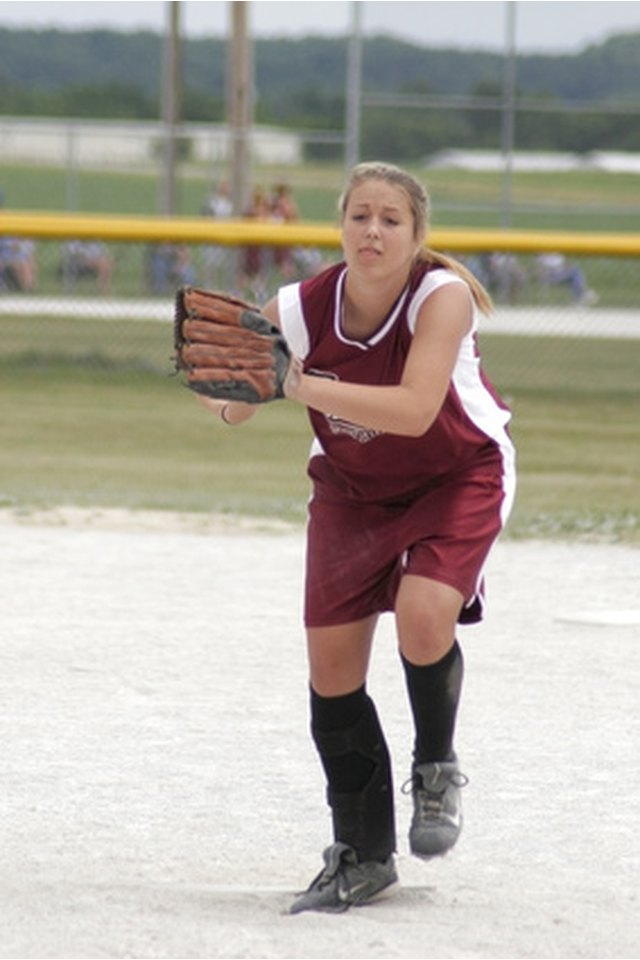ASA Fastpitch Softball Pitching Rules

The Amateur Softball Association of America (ASA) regulates softball rules for non-professional leagues across the country. ASA establishes rules for both slowpitch and fastpitch softball. As the names would imply, these two games vary regarding some of their pitching rules, and understanding the pitching rules in fastpitch softball can make the difference between a successful team and last place.
Legal Delivery
ASA lists a number of requirements for a legal delivery in fastpitch softball. There is no regulation on the speed of the pitch in fastpitch softball, meaning that the pitcher can throw as hard as possible. There is also no regular on the arc of the ball as it approaches the batter, while slowpitch requires an arc between 6 and 10 feet.
The fastpitch delivery must take place within 20 seconds of the last pitch. The pitcher cannot put her hands together again once they have separated to throw the ball, and she can make no more than two revolutions with her arm before releasing the ball. The pitcher’s hand must be below the hip upon release of the ball, with her wrist no farther away from her body than her elbow.
The pitcher cannot drop or bounce the ball up to the plate in an attempt to stop the batter from hitting the ball.
Violations
ASA fastpitch regulations state that the pitcher must push off of the plate with her pivot foot, and can only push and drag with her feet. One foot must remain on the ground at all times.
A crow hop is an illegal fastpitch move in which the pitcher steps, hops or drags both feet off of the plate, and then replants the foot for a second push-off. This move can result in a significant advantage in delivery speed and confused timing for the batter, and is therefore illegal in ASA fastpitch softball.
Leaping is also a violation. Leaping occurs when the pitcher illegally raises both feet from the ground at once.
There is also an ASA regulation regarding the way the pitcher can step away from the plate. For women’s softball, the pitcher must take a step with the leading foot (the non-pivot foot) that coincides with releasing the ball. This step must go forward with the momentum of the throw, and must stay within the range of the pitcher’s plate, which is 24 inches long. The pitcher cannot step to the side any farther than that.
References
Writer Bio
Samantha Volz has been involved in journalistic and informative writing for over eight years. She holds a bachelor's degree in English literature from Lycoming College, Williamsport, Pennsylvania, with a minor in European history. In college she was editor-in-chief of the student newspaper and completed a professional internship with the "Williamsport Sun-Gazette," serving as a full-time reporter. She resides in Horsham, Pennsylvania.
